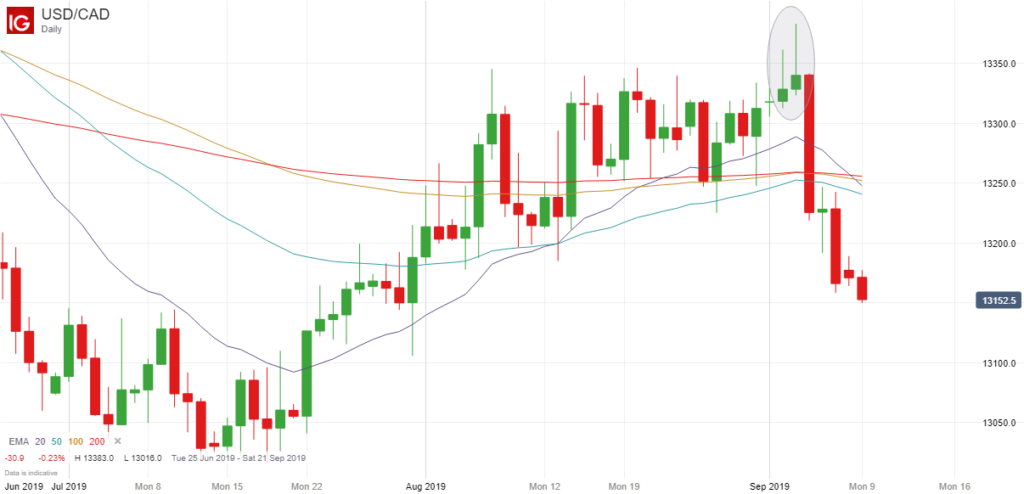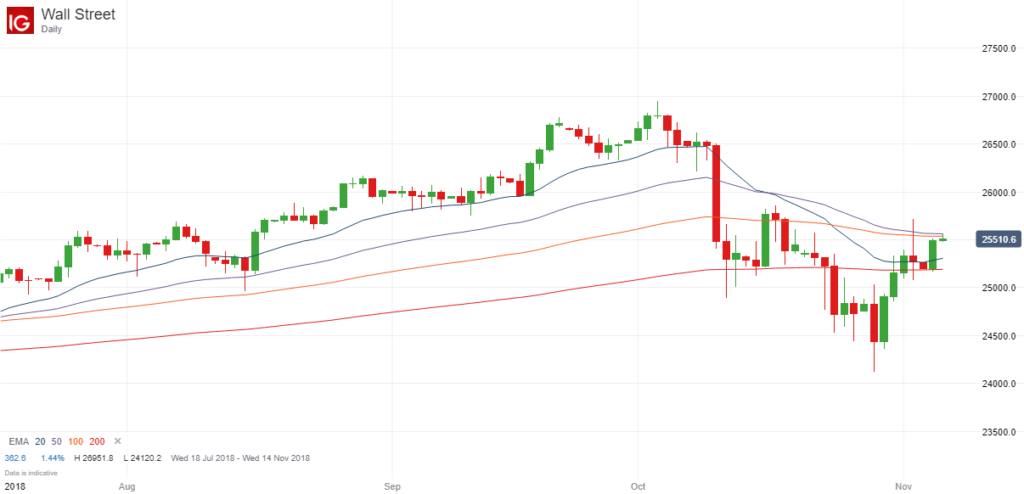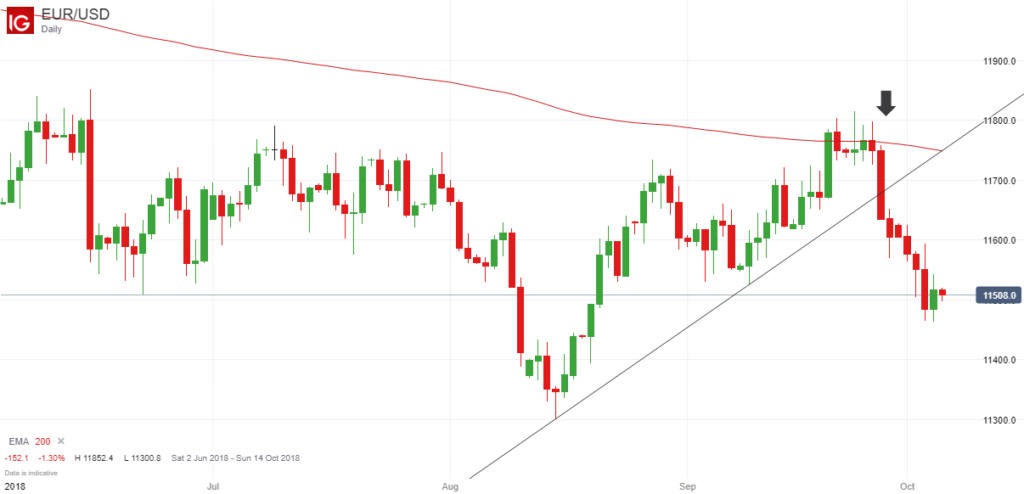Introduction to Pin Bars
I was listening to a podcast over the weekend and one of the traders being interviewed said that despite having about three core strategies that she likes to use, it is the simple pin bar that often provides her with the best signals.
To remind you, a pin bar is essentially where you have a long candlestick with a very small body, and when you get these pin bars towards the end of an upward or downward trend, it often signals that the trend is running out of momentum and likely to reverse.
One pin bar by itself often provides a very good trend reversal signal, but when you get two pin bars together, it is often a very strong signal that the trend is coming to an end.
Real-Life Example From USD/CAD Pair
I was reminded of this just recently when I was looking at the daily chart of the USD/CAD pair. As you can see below, the price has been recovering strongly since the middle of July, and has recently crossed above the 200-day moving average:

More significantly, it also threatened to break even higher last week after being stuck in quite a narrow trading range for a number of weeks, but after posting two new highs on consecutive days, the price fell back down on both occasions and ended up forming a pin bar on both days.
Trading Opportunity
As a result of this double pin bar formation, there was a good opportunity to place an order to open a short position a few pips below the lowest point of these two pin bars at around 1.3310 to catch any reversal, and as it turned out, this would have been a very profitable trade.
At the time of writing, the USD/CAD is trading at around 1.3150, which equates to around 160 points profit if you had entered a short position just below the lowest point of the two pin bars.
Final Thoughts
The point of this article was not simply to highlight a profitable set-up that you might have missed. It was to demonstrate how profitable these double pin bar set-ups can be when they actually occur.
Unfortunately they don’t tend to occur very often, so you won’t necessarily be able to trade these high-probability set-ups several times a month, for example, but it is worth keeping an eye out for them, particularly on the longer time frames when the odds of success are so much higher.
What I like about pin bars, and double pin bars in particular, is that there is an obvious place to place your stop loss – a few pips above the highest point of the two pin bars, as in this case, or a few pips below the lowest point in a downward trend.
The difficult part is trying to work out where you should take profits because sometimes you can get a large reversal, as was the case here with the USD/CAD pair, whereas other times the price may only move 10-20 pips before consolidating in the previous trading range or continuing its previous trend.
Therefore it could be argued that the best pin bar strategy is to close half the position for a small profit and let the other half run for as long as possible, but everyone will have their own methods of trading these high-probability set-ups. Ultimately you just have to find a strategy that works for you.

